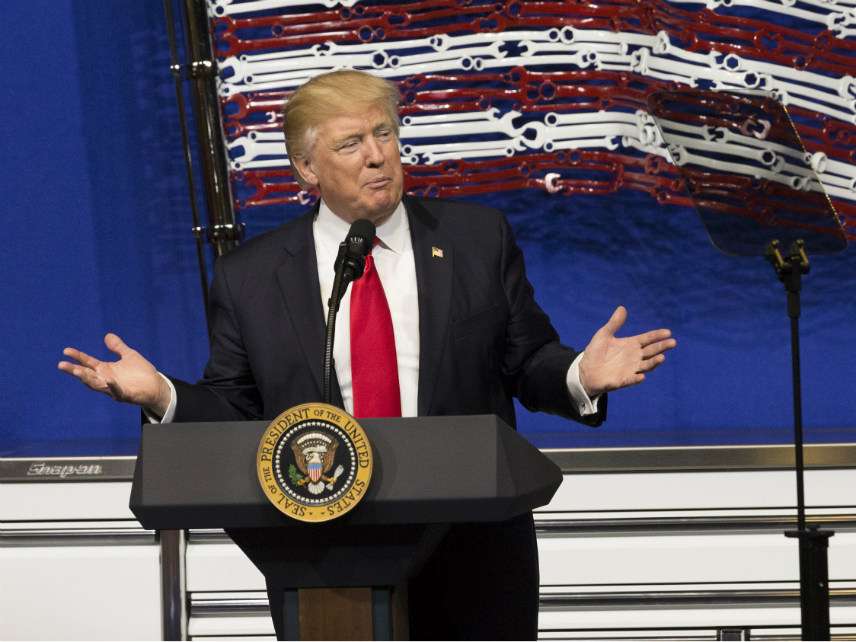Hey Trump, American Manufacturing is Doing Just Fine
Don't ruin it with protectionist trade policies.

Trump talks about America's manufacturing sector like he's delivering a eulogy. "Rusted out factories are scattered like tombstones across the landscape of our nation," he said in his inaugural address. "The wealth of our middle class has been ripped from our homes and redistributed all cross the world."
That isn't the only apocalyptic note the president has struck on the subject. He talks like that all the time, particularly when pitching his protectionist agenda. In the months since taking office, Trump has slapped Canadian lumber and airplanes with hefty tariffs and has launched investigations into Chinese steel.
But American manufacturing is actually experiencing something of a boom right now.
According to Institute for Industrial Supply Management's widely watched index on manufacturing output, American manufacturers are humming along at a 13-year high.
The institute surveys 300 industry executives on their hiring, inventories, supply orders, and levels of production, which it combines with stock prices to produce a final index score. Anything over 50 implies manufacturing is growing. Yesterday the score hit 60.8, the highest it's been since May 2004.
Dan Ikenson, a trade policy analyst with the Cato Institute, says the whole idea of a decline in American manufacturing is a myth.
"In absolute terms, the value of U.S. manufacturing has been growing continuously, with brief hiccups experienced during recessions over the past several decades," he testified to Congress in March. According to the St. Louis Federal Reserve, American manufacturing output has been growing continuously in real terms for decades, and is currently at an all-time high.
It is true that the number of manufacturing jobs has declined in real terms, after reaching a peak in 1979—something else Trump is quick to bemoan. But technology, not trade, has largely driven that decline. Tariffs wouldn't have stopped that.
Besides, the purpose of manufacturing of is to make things, not jobs. "You shouldn't just be creating jobs for the sake of creating jobs," says Matthew Mitchell, an economist at George Mason University, adding that "the concept is unfortunately lost on most policy makers."
Monday's numbers also show remarkable resilience in the face of damage done to industrial areas in Texas and the American Southeast by hurricanes Harvey, Irma, and Maria—much to the surprise of many industry analysts.
"The economy appears to have taken the punch and rolled with it," Ian Shepherdson, chief economist at Pantheon Macroeconomics, tells The Wall Street Journal.
But what natural disasters can't destroy, protectionist policies certainly can. Tariffs don't just raise the cost to consumers; they mean American producers spend more for products as well.
Trump's lumber tariffs have been eaten by U.S. homebuilders, who now have to pay 20 percent more for this particular building material. Or take Trump's fervent desire to slap tariffs on imported steel. As Ikenson told Reason back in April, "Steel counts for .3 percent of GDP and employs 80,000 workers"—numbers dwarfed by the industries that buy steel to make their own products. By imposing tariffs, said Ikenson, "we are hurting downstream workers which employ 70 workers for every steel worker."
In short, American manufacturing is thriving right now. Trump shouldn't ruin that with trade barriers.
Rent Free is a weekly newsletter from Christian Britschgi on urbanism and the fight for less regulation, more housing, more property rights, and more freedom in America's cities.


Show Comments (16)